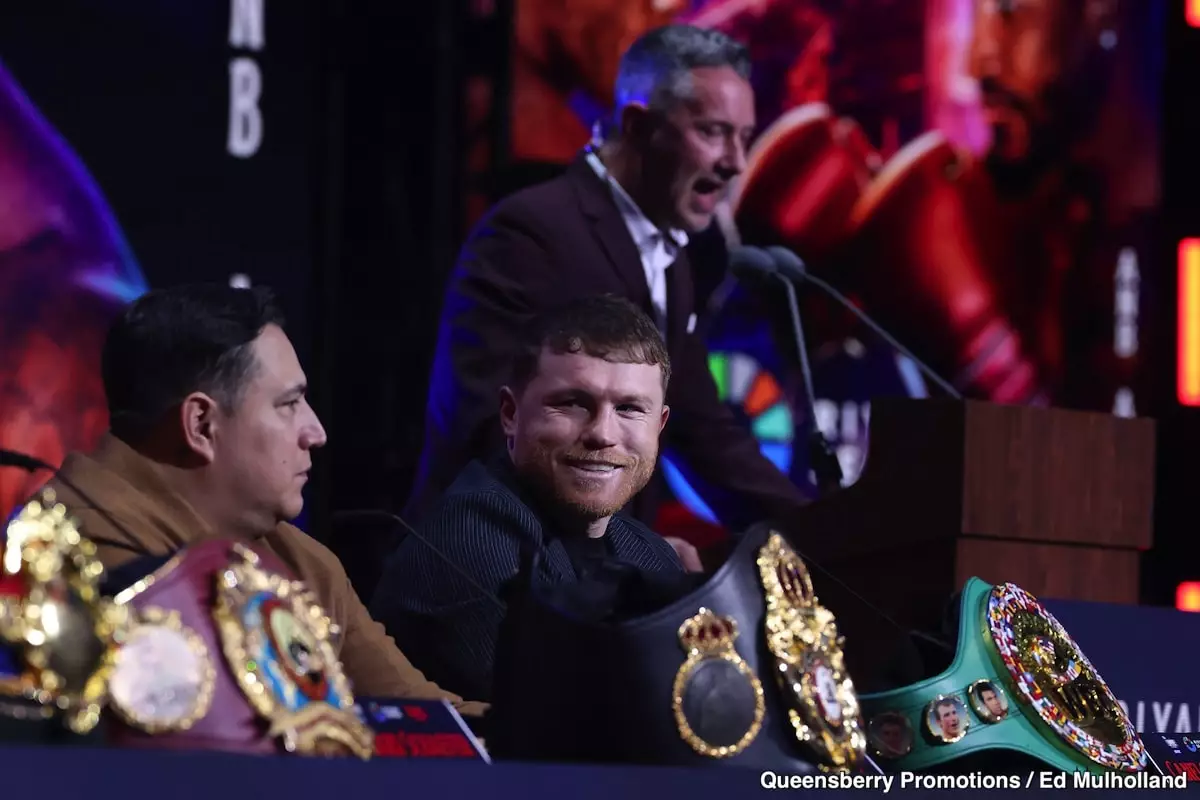Canelo Alvarez: The Controversial Legacy of Boxing’s “Face”
In the world of boxing, few names ring as loudly as Canelo Alvarez. For years now, he’s embraced the title of the “Face of Boxing,” a mantle earned through both his undeniable skill and remarkable financial success. However, with this accolade comes scrutiny, especially in a sport that never sleeps and is brimming with ambitious young fighters eager to make their mark. At 34, Canelo’s career spans over a decade, but recent decisions about whom he faces in the ring have stirred conversations about his legacy.
Financially speaking, Canelo is a powerhouse. His earnings dwarf nearly every other boxer in North America, maintaining his high status within the sport. Yet, as any true boxing aficionado will tell you, financial success does not always equate to being the best. His upcoming bout against William Scull lacks the excitement and anticipation that used to accompany his fights against legends like Floyd Mayweather Jr. and Gennadiy Golovkin. This fight is part of a larger event featuring Ryan Garcia, which seems to dilute Canelo’s individual stardom.
Key Takeaways
- Canelo Alvarez has held onto the “Face of Boxing” title for years due to his impressive career and earnings.
- Recent choices in opponents have sparked debate about his willingness to face high-risk fighters.
- The upcoming fight with William Scull highlights concerns about his current trajectory in boxing.
Risk and Reputation: A Diminishing Path
The notion of risk is something that Canelo seems to have cautiously avoided in recent times. By steering clear of challenging matchups with formidable opponents like David Benavidez or opting not to rematch Dmitry Bivol, questions arise about his place among boxing’s elite. While his loyalty to longtime trainer Eddy Reynoso is commendable, it doesn’t fully excuse what many perceive as a strategic avoidance of rigorous competition demanded by fans and purists alike.
Canelo acknowledges that there are “some really good fighters out there,” yet how can he truly claim superiority if he sidesteps battles with the best? Fighters like Benavidez and Terence Crawford are eager to carve their own legacies, potentially at Canelo’s expense. If one considers themselves the pinnacle of excellence, avoiding challenges only raises questions about what that truly signifies.
The Illusion of Loyalty
Canelo’s comments on loyalty might sound admirable at first glance but suggest a complex narrative at this juncture in his career. As he builds what appears to be a carefully curated legacy, there’s speculation that he’s avoiding genuine competition for more than just camaraderie. His reluctance to fight other Mexican boxers hints at congestion within his division’s top ranks and raises ethical considerations about the business side of boxing.
By declaring, “I don’t like to fight Mexicans because I always appreciate all the talent from Mexico,” Canelo unintentionally questions whether this decision is fueled by national pride or a tactical retreat from tougher competition. For someone who positions himself as an icon for aspiring fighters, this stance invites skepticism about his motivations.
How Legacy is Forged in Disputes, Not Declines
Boxing thrives on legendary rivalries and epic battles—it’s where true legacies are forged. If Canelo wishes to solidify his place as boxing’s enduring “Face,” he must engage with top-tier competitors such as David Morrell, Christian Mbilli, and Artur Beterbiev. The essence of boxing lies in risk-taking; without it, Canelo risks fading into a legacy defined by wealth rather than greatness.
A victory over Terence Crawford or any significant contender could restore some credibility for Canelo. Yet past choices loom large over any future triumphs. The world watches intently to see if he can reclaim dominance in a fractured landscape—a narrative fraught with uncertainty as he navigates between securing history and resting on past laurels.
Final Thoughts
Canelo Alvarez stands at a pivotal point in his illustrious career. While he’s undoubtedly achieved much both inside and outside the ring, it’s clear that maintaining his status requires more than just financial success or carefully chosen opponents. True greatness in boxing is defined by facing formidable foes head-on and embracing the risks that come with them. As fans and critics alike await his next moves, only time will tell if Canelo can rise above criticism and secure an irrefutable legacy.
Canelo Alvarez
Boxing Legacy
Sports Controversy
“`
[CONTINUE FROM HERE]


Leave a Reply